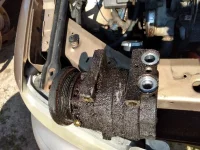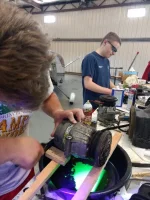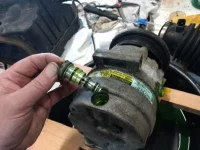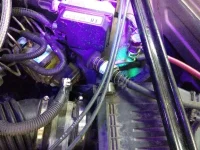Unless the compressor is physically in a position so that you can drain and refill the crankcase (the drain is always within about 20 degrees of pointing straight down on the V5, IIRC), you are faced with adding oil into the system like other sump-less designs. GM manuals have specs for this as well. The crankcase is under pressure when the system is charged, but there have been exceptions (non-GM) with isolation valves that did allow for compressor lubrication service without discharging the entire system.
The compressor you found definitely has a protective coating!







